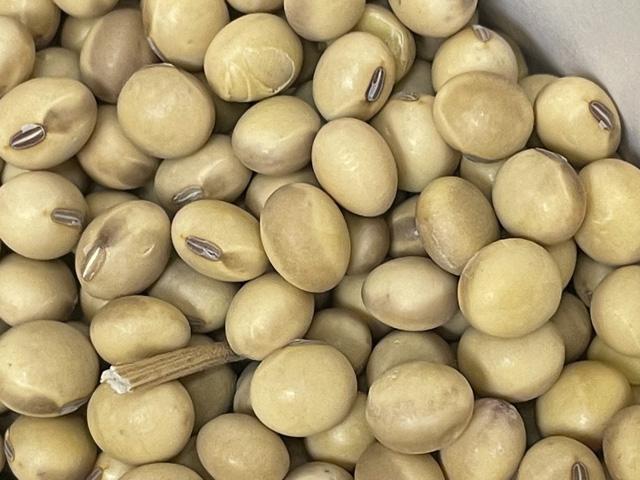USDA to Review Soybean Grading Factors
Color May Be Eliminated as a Criteria for Soybean Quality
JEFFERSON CITY, Mo. (DTN) -- The factors used when grading soybeans could be amended if proposed changes to U.S. Standards for Soybeans are implemented.
In a Nov. 8 news release, USDA Agricultural Marketing Service (AMS) announced that the Federal Grain and Inspection Service (FGIS) will publish a proposed rule seeking public comment on a proposal that could lead to the elimination of soybeans of other colors (SBOC) as a grading factor for determining soybean quality.
In response to these requests for changes, USDA will implement notice and comment rulemaking, as required by the U.S. Grain Standards Act (USGSA), to receive comments from the public regarding whether SBOC should be considered an informational factor that does not affect soybean grade determinations. USDA did not announce a publication date for the proposal or a due date for public comments.
In an email sent to DTN, a spokesperson for the American Soybean Association wrote that "ASA has been monitoring grading issues around certain varieties of soybeans producing colored seed coats, and we have been closely engaged with our partners at the Federal Grain Inspection Service, the U.S. Soybean Export Council and other stakeholders to share information and developments around SBOC.
"We are glad to see USDA moving forward with this proposal to remove SBOC as a grade-determining factor for U.S. soybeans."
P[L1] D[0x0] M[300x250] OOP[F] ADUNIT[] T[]
Currently when assigning a grade to soybeans, FGIS uses four main factors: damaged kernels, foreign material, splits and SBOC. Each has a maximum percent limit within the grain sample. To receive designation as U.S. No. 1 yellow soybean, the maximum SBOC percentage allowed is 1%. That percentage increases to 2% for No. 2 grade and 5% for No. 3 grade yellow soybeans.
Historically, SBOC levels have been low and rarely affected the grade of soybeans. However, the past two years, the number of soybeans that failed to make a No. 1 grade due to SBOC has increased. Data published by USDA in October showed that 7.81% of graded soybeans during calendar year 2021 and 22.06% in 2022 had SBOC above the No. 1 threshold. By contrast, in the previous decade, that percentage never exceeded 1.22%.
The increase in SBOC percentages in soybeans has correlated with the increase in acreage planted to Enlist E3 soybeans, which have been popular with growers combating herbicide-resistant weeds. The share of U.S. soybean acres planted to Enlist E3 has grown from less than 5% in 2019 to more than 45% in 2022, according to data shared by Corteva in September.
Soybeans naturally produce some off-color seeds. The color can be influenced by genetics as well as environmental factors, pests and disease. The occurrence of off-color Enlist beans has been acknowledged since the technology was first introduced. However, its rapid adoption has created a situation wherein larger volumes of soybeans entering the grain stream have failed to meet No. 1 grade requirements due to SBOC, causing headaches for grain buyers and exporters.
In its news release, USDA stated it had recently received numerous requests from representatives of U.S. soybean producers and grain traders to remove SBOC as a grade-determining factor.
In an alert sent to its members, which includes DTN, the National Grain & Feed Association shared the following from a Nov. 8 letter to NGFA from USDA Under Secretary for Marketing and Regulatory Programs Jenny Lester Moffitt:
"In relation to the FGIS soybean standards, USDA acknowledges uncertainty that the increased presence of soybean seed coat discoloration has introduced to the marketing of the U.S. soybean crop. Due to this phenomenon and the SBOC criteria in the standard, more soybeans have been graded as SBOC."
Even if expedited, USDA told NGFA this process will take several months to complete, which may conclude after the 2022-23 marketing year.
At the request of GIAC, FGIS conducted a study to evaluate whether the presence of SBOC had an impact on the quality of soybean protein and oil. The study found no significant differences in official protein or oil content. Read the results here: https://www.ams.usda.gov/….
Read more about off-color soybeans here: https://www.dtnpf.com/….
Jason Jenkins can be reached at jason.jenkins@dtn.com
Follow him on Twitter @JasonJenkinsDTN
(c) Copyright 2022 DTN, LLC. All rights reserved.






